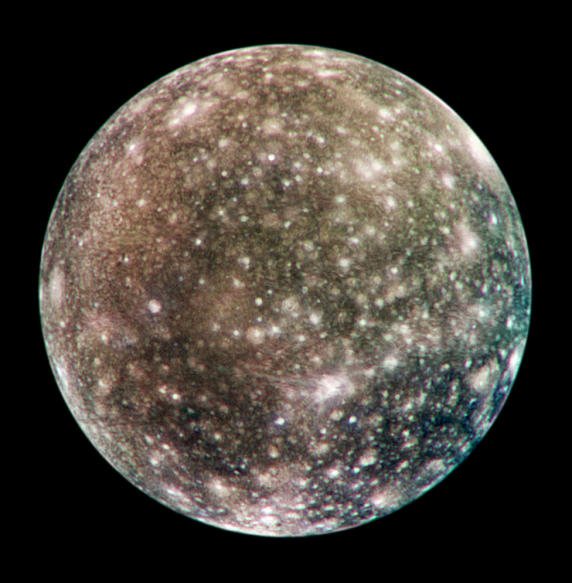This post comes from an "Ask Tsana" comment.
Sam Keola asked:
Once you've decided to build something sealed, then it would be better for colonists to build on Ganymede, as opposed to the other Galilean moons, for a few reasons:
In terms of finding water to mine, all three moons in question (ie, not Io) have water on them, so that shouldn't be too much of a problem, especially if you're already planning to mine other things.
Of course, there are also reasons why Europa would be a desirable place for a colony, especially for scientific reasons, exploring it's subsurface ocean primary among them. There's a good chance there's microbial life there.
So there you have it, if you're going to colonise the larger Galilean moons, it's better to build a close structure on them rather than try to impart an atmosphere. It would be even harder than giving Earth's moon a permanent atmosphere.
Sam Keola asked:
The main problem with terraforming either of those moons is their gravity isn't large enough to keep any atmospheric gases for long after they're introduced. Ganymede, which is larger, has a surface gravity of close to a seventh of Earth's which is less than half of Mars's and Mars has difficulty keeping much of an atmosphere itself. Purely from that point of view, domes or something else sealed would be better.Aloha from Hawai'i again Tsana! I have a hypothetical question. If in the very distant future we had the technology to terraform, would it be best to terraform Callisto and Ganymede or set up domed bases? Ganymede is suppose to have an ocean similar to Europa, but I'm not sure if that's "world wide". Your thoughts on terraforming!
 |
| Callisto. Credit: Galileo Project, Voyager Project, JPL, NASA |
Once you've decided to build something sealed, then it would be better for colonists to build on Ganymede, as opposed to the other Galilean moons, for a few reasons:
- It has the highest surface gravity, not by much but every little bit would prevent colonist's bodies from degrading. Actually, because the Galilean moons are less dense than Earth's moon, they have a lower surface gravity, despite being larger in volume. You're going to have low gravity-related heath problems in any case, however.
- It's not as close to Jupiter as Europa (and Io!) is. The phenomenon responsible for keeping Europa's interior liquid is tidal friction thanks to its proximity to Jupiter. It's the sort of thing that also makes the surface more unstable (prone to volcanoes -- not as much as Io, of course -- and quakes) and less hospitable to people. You can read more about it here.
In terms of finding water to mine, all three moons in question (ie, not Io) have water on them, so that shouldn't be too much of a problem, especially if you're already planning to mine other things.
Of course, there are also reasons why Europa would be a desirable place for a colony, especially for scientific reasons, exploring it's subsurface ocean primary among them. There's a good chance there's microbial life there.
So there you have it, if you're going to colonise the larger Galilean moons, it's better to build a close structure on them rather than try to impart an atmosphere. It would be even harder than giving Earth's moon a permanent atmosphere.
Interesting topic! I covered the topic of exploring Ganymede in my latest article! I didn't approach the topic of atmosphere in as much depth as you did.
ReplyDelete